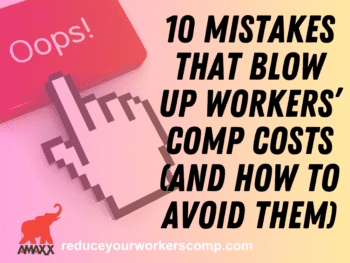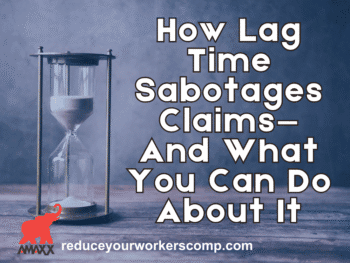The following is a slightly reworded quote: “We must remember that confusion, like fog, envelopes the whole field of conflict, including the opponent. Initiative, any clear-cut action, tends to dispel it.”
Records Show Long History of Workers Comp Confusion
If employers were to review the NY Board records of their comp claims, they would quickly understand the need for “any clear-cut action”. It is probably true of most other jurisdictions as well, but the author has been kept more than busy dealing with it in NY alone.
Far too many times, the answer to a judge’s question is, “I don’t know”. Far too many times, a request is made for an adjournment to get further information. Far too many times, witnesses for the employer are puzzled at why they are being asked to testify. Confusion? Absolutely!
Confusion is Wasted Opportunity
Confusion in comp claims is like random motion in molecules. It contains much energy, but all of it is wasted and cannot perform useful work. That, in turn, costs the employer money. The employer, therefore, faces a choice – learn how to create clear-cut action, or pay for the fog of ill considered litigation. The option of waiting for everyone else to learn is not, and never has been, available.
How can the employer learn? In fact, they have had the opportunity for decades. Simply keep up to date on the progress of your nightmare claims. Usually, the employer begins to demand answers, and provide info, only after a long series of missed opportunities has become entrenched. At that point, the fog begins to lift, but it reveals the expensive conclusion of the claim, not the chances for opportunity.
Employers must realize that their complaints contain the seeds of information. You complain because you strongly feel that something is very wrong. What is it that you feel is wrong? What have you seen and heard that accounts for the frustration? Most of all, are your doubts backed up by documents? (One document will do the work of ten witnesses.)
Document at Beginning of Claim
Instead of expressing frustration at 100 decibels at the end of the claim, commit the doubts to written form at the beginning. Your closing statement should be “see attached”, where you forward supporting original documents. Let your claims be a boring recitation of demonstrable facts, not the exiting, cliff hanging suspense of confusion.
Author: Attorney Theodore Ronca is a practicing lawyer from Aquebogue, NY. He is a frequent writer and speaker, and has represented employers in the areas of workers’ compensation, Social Security disability, employee disability plans and subrogation for over 30 years. Attorney Ronca can be reached at 631-722-2100. medsearch7@optonline.net
Editor Michael B. Stack, CPA, Director of Operations, Amaxx Risk Solutions, Inc. is an expert in employer communication systems and part of the Amaxx team helping companies reduce their workers compensation costs by 20% to 50%. He is a writer, speaker, and website publisher. www.reduceyourworkerscomp.com. Contact: mstack@reduceyourworkerscomp.com.
©2012 Amaxx Risk Solutions, Inc. All rights reserved under International Copyright Law.












